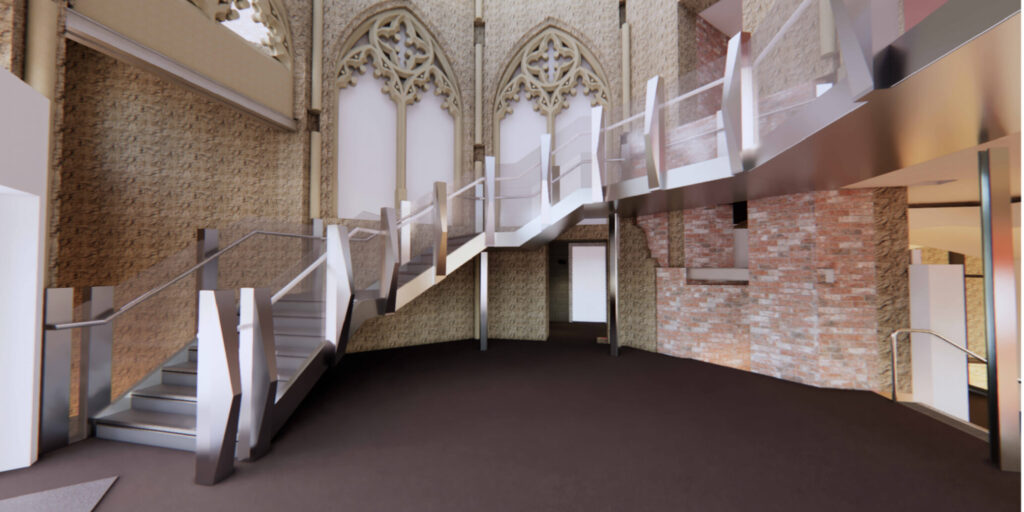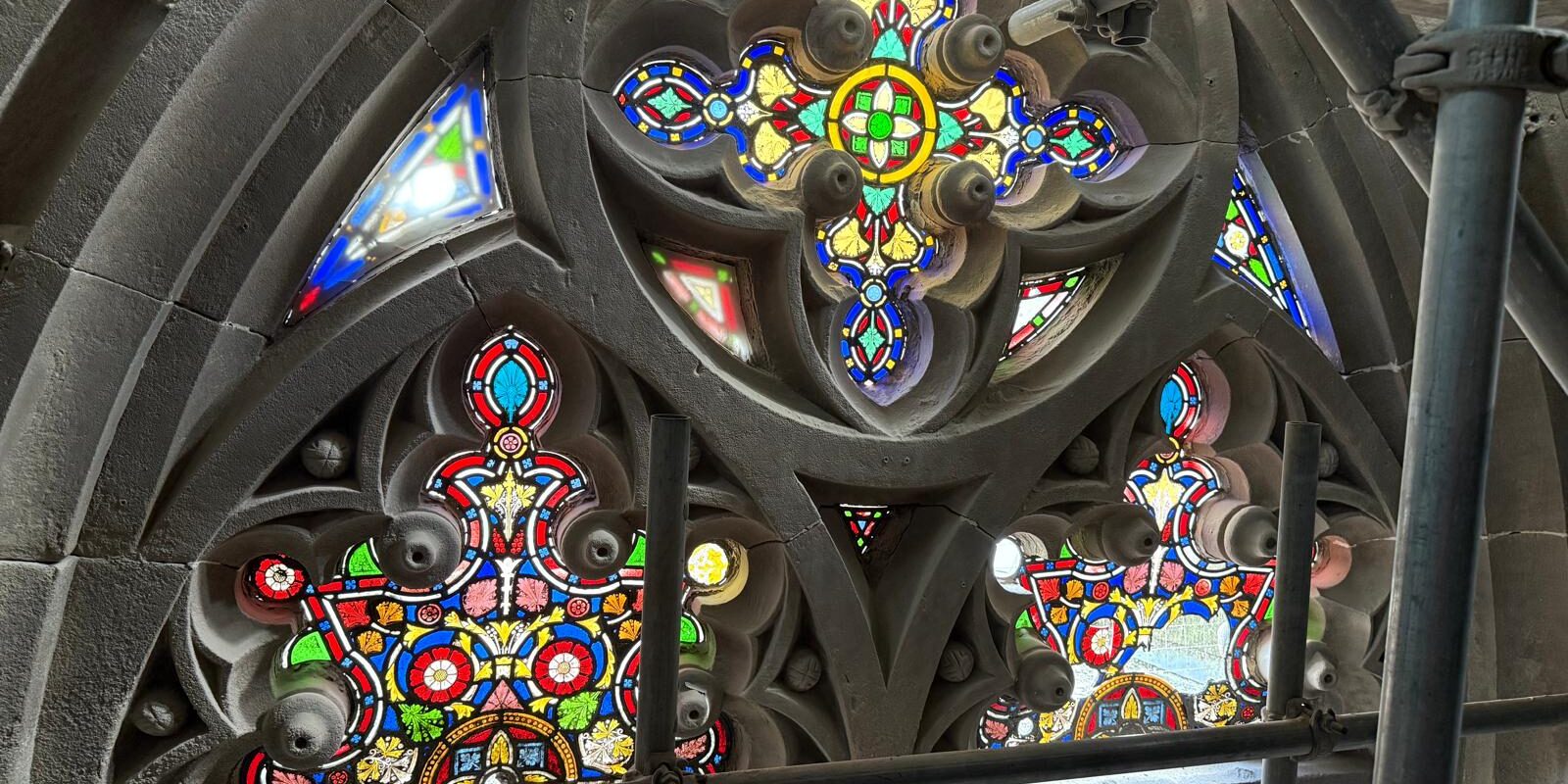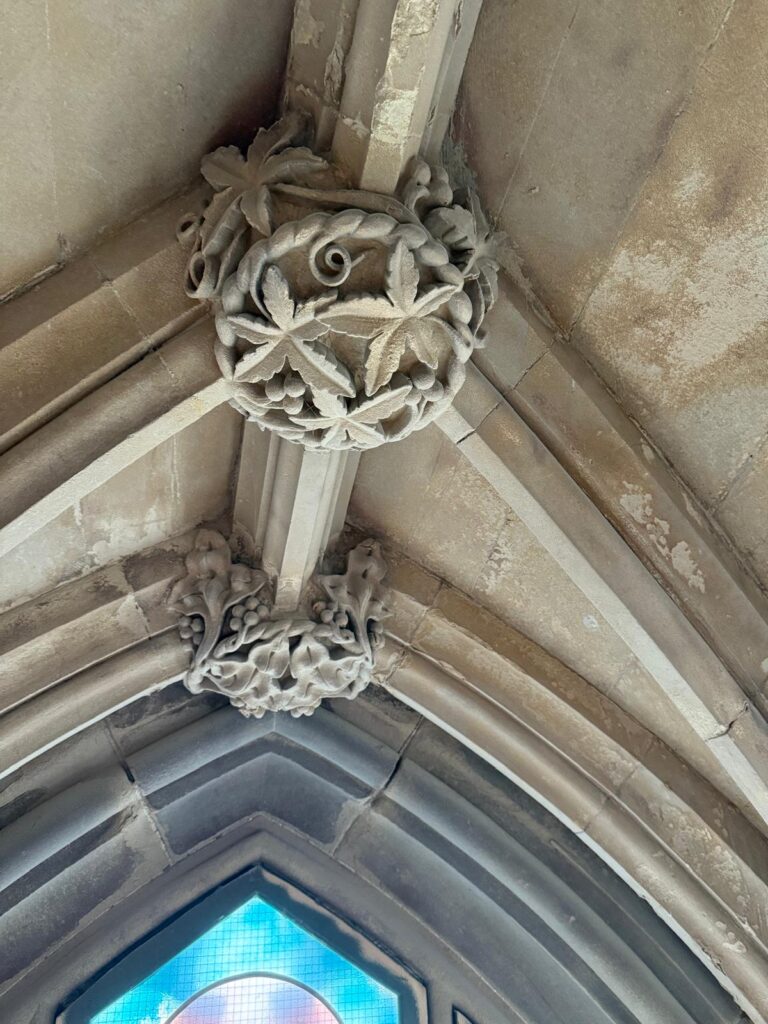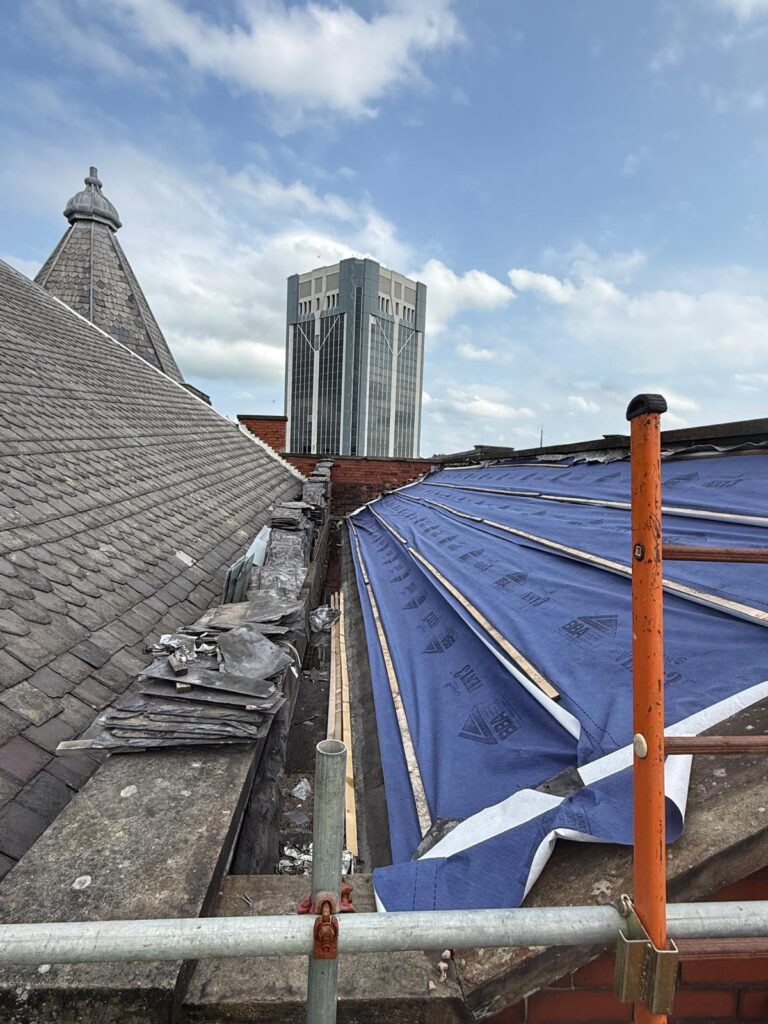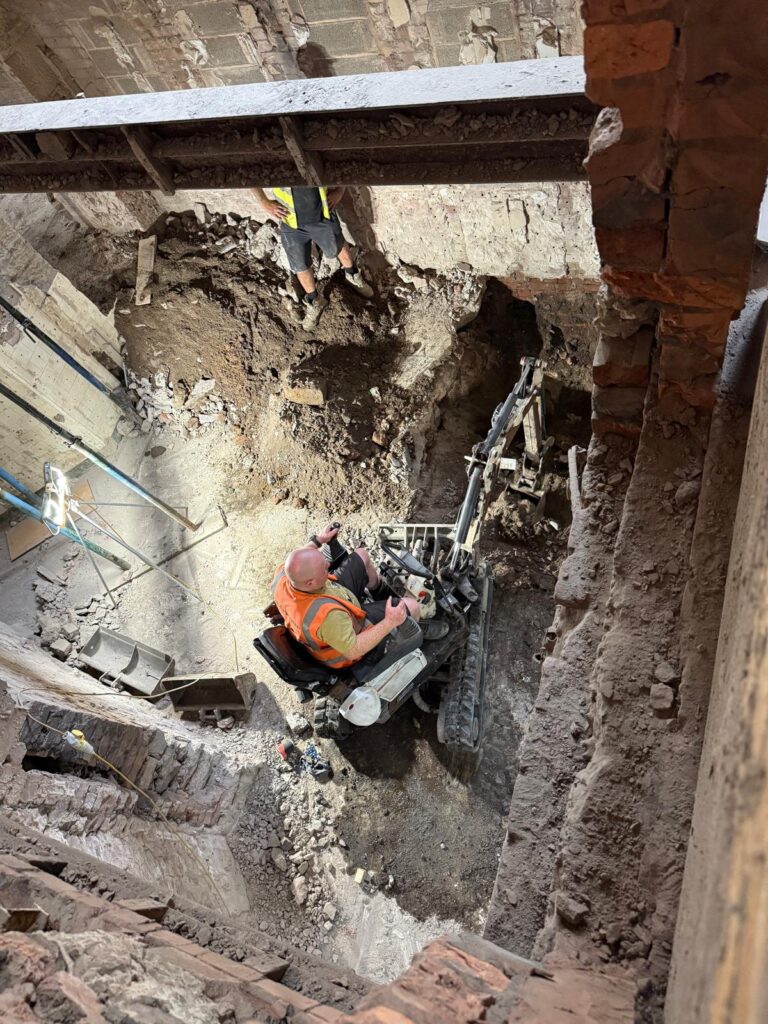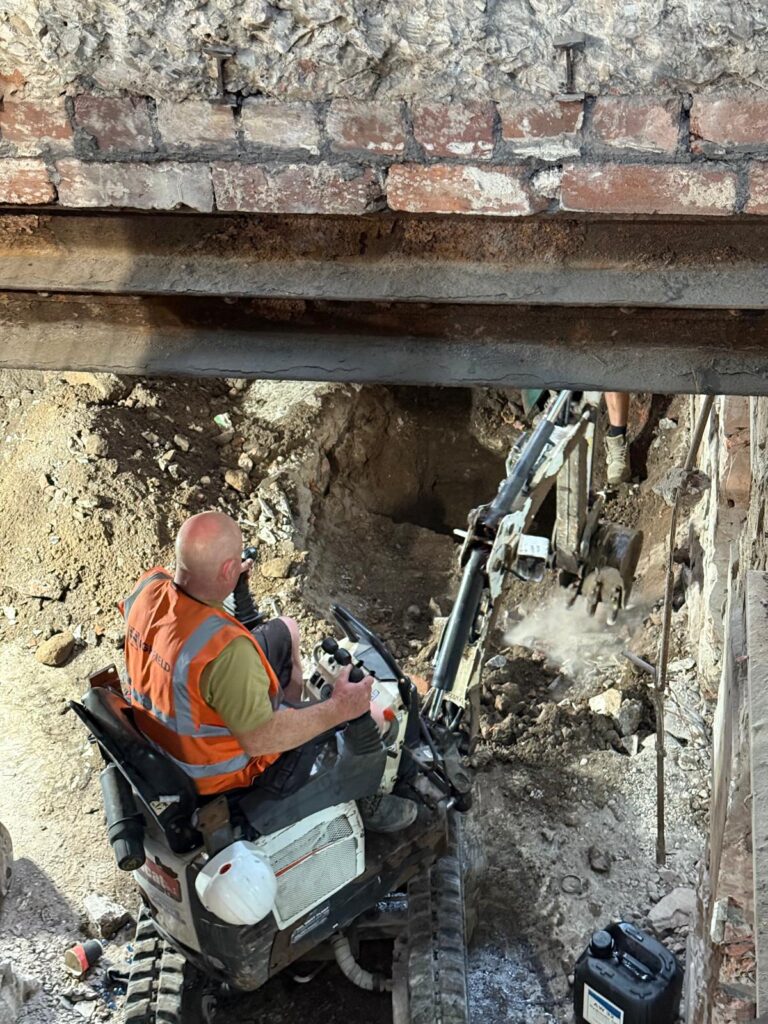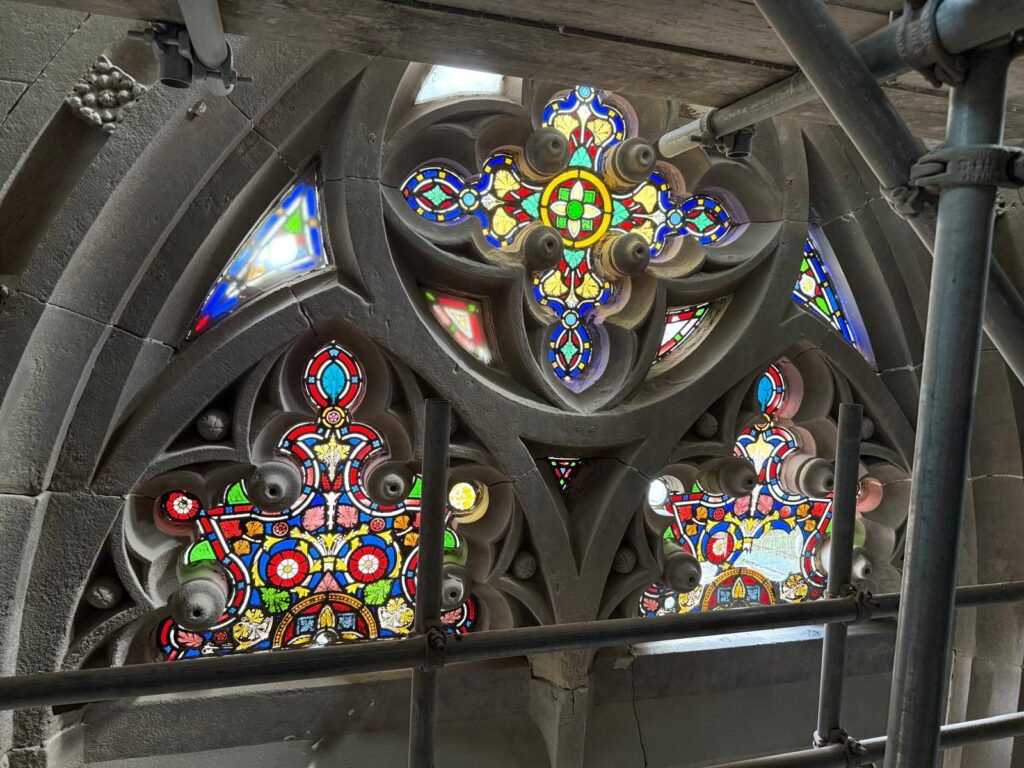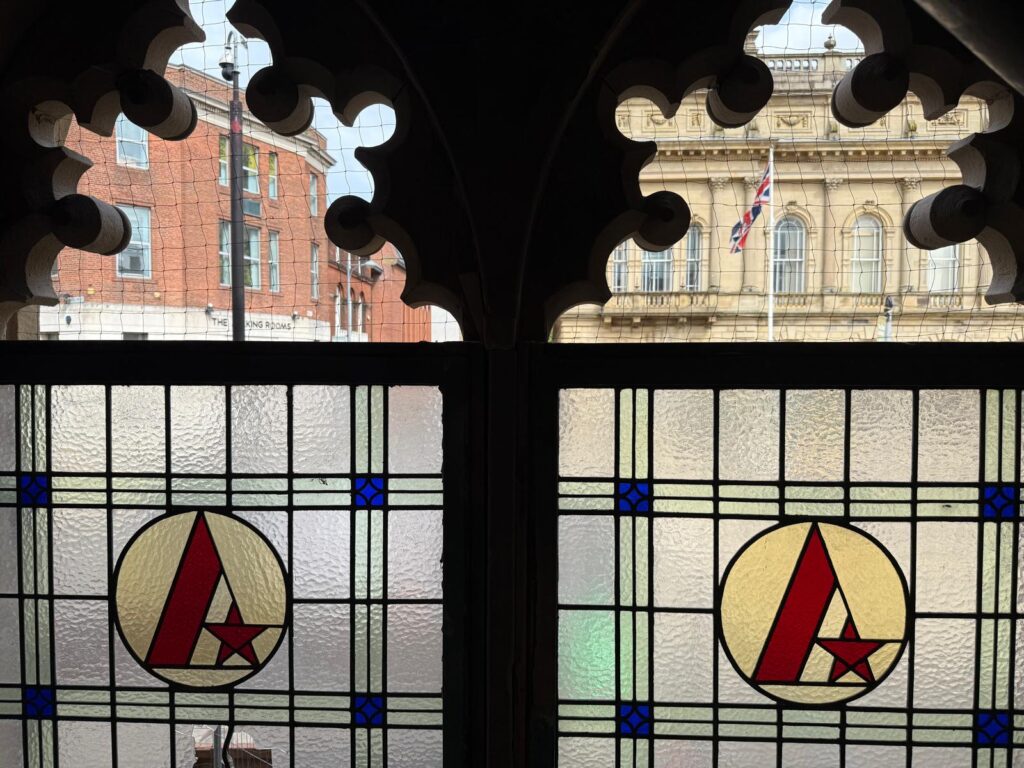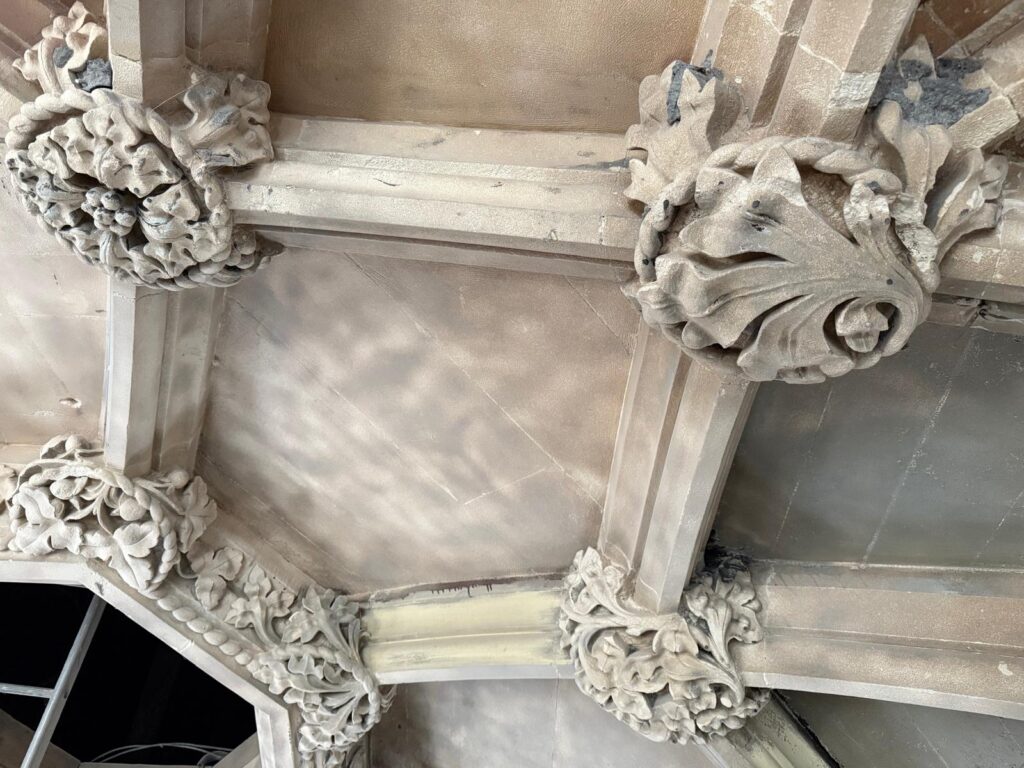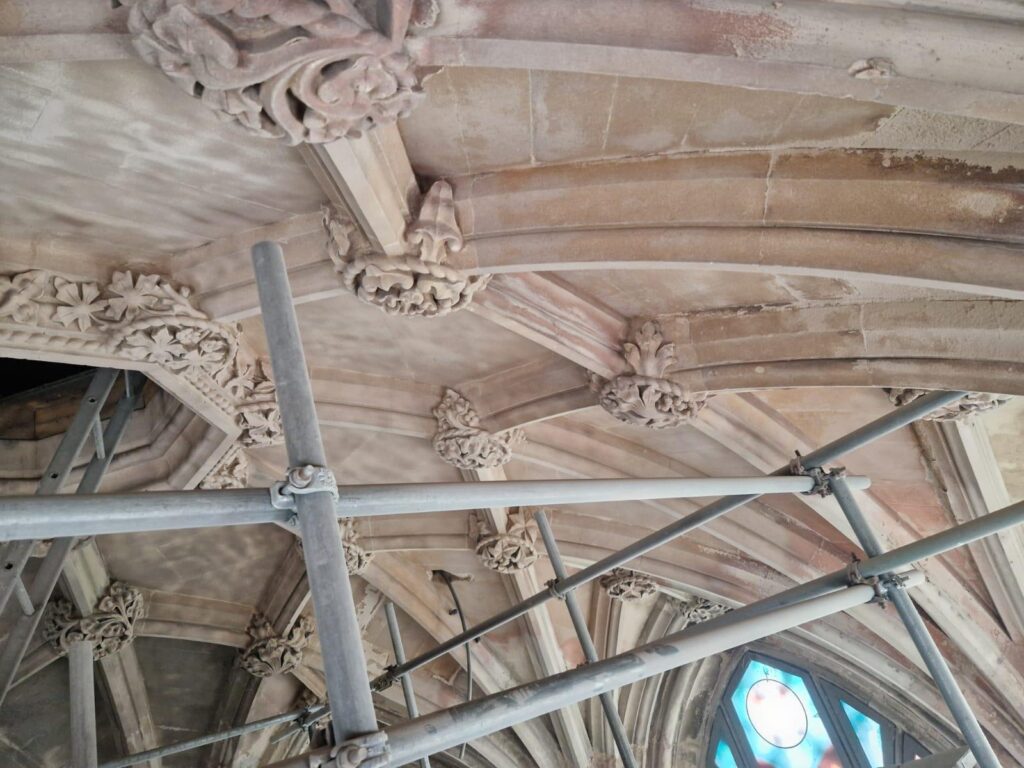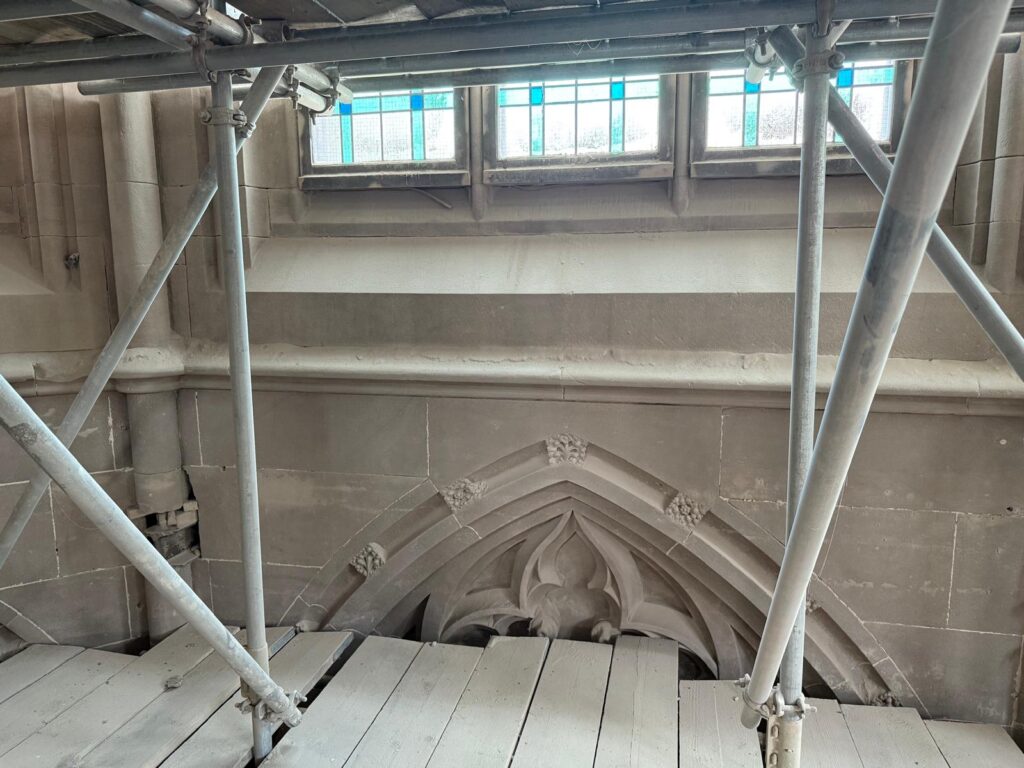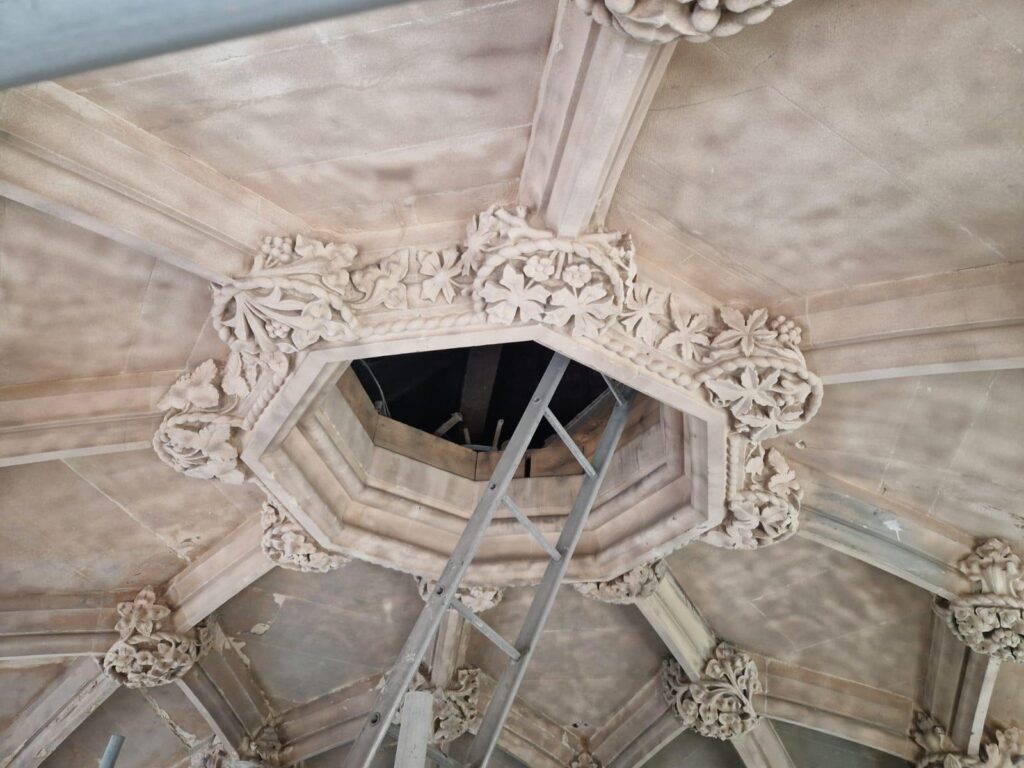Stunning pictures of restored stained-glass windows give a glimpse of the remarkable transformation happening at The Exchange which will reopen later this year, following a £1.5m facelift.
Chair of Trustees, JJ McGregor has confirmed that the team are on track to reopen the building before Christmas when The Exchange will be operational. Fundraising will continue to raise £9.5m to complete the rest of the capital work needed to restore and regenerate the venue to become a visually stunning and viable space for events and activities of national significance and local impact. Enquiries for venue hire bookings in 2026 and 2027 should be emailed to info@exchangeblackburn.org.uk.
Photographs show the restored stained-glass windows in the tower and the Exchange Hall, and sculptured stonework, previously hidden under layers of dirt which are now in the same condition as when the building first opened in 1865.
The development work has been funded by Blackburn with Darwen Borough Council, and is focussed on the iconic octagonal tower entrance. Access improvements including a new 8 person lift which will connect the lower ground floor with the entrance level, upper ground level and a new mezzanine level. The main stairs have been removed completely, and a new entrance is being created to the lower ground floor (formally the Tiggis restaurant). A stunning new stairway will provide stepped access to the upper floors. New toilets are being installed on the lower ground and upper ground floors.
Work to raise and replace the unsafe and leaky roof of the 1920s extension behind the main Exchange Hall will bring it into use for the first time in decades. Local Historian, Chris Walton, Archivist for The Exchange and co-author of ‘The Exchange, The Foundation Years’ explains: “The windows were originally produced by Messrs Edmondson and Son, from Manchester. The company was founded in 1854 by Ralph Bolton Edmondson, and continued under his son until 1890. They were well known for their skilled glass making, and their work is featured in many churches including Holy Trinity Church, Waterhead, Oldham, and St Mary’s Church, Nether Alderley, Cheshire.”
“The carvings are likely by Mr Job Gregg, a stone carver and hotel keeper, who married Catherine Smalley in 1869. The couple were listed in 1873 as living at Duckworth Street with their daughter, Lizzie, and in 1876 at Smalley’s Hotel, Market Street, with their youngest daughter Annie. He was a well-regarded person and member of various committees tasked with raising funds for local beneficiaries.”
The building closed as a cinema in 2005 and was semi-derelict until it was bought by volunteers in 2014, determined to restore and regenerate it as a multi-purpose community space. Over the last ten years, the team have raised and invested over £2 million, gathered volunteers and support, and attracted thousands of visitors through partnerships with organisations such as the National Festival of Making. Super Slow Way and the British Textile Biennial.
The image below is the architects’ impression of the transformation of the new entrance tower.
